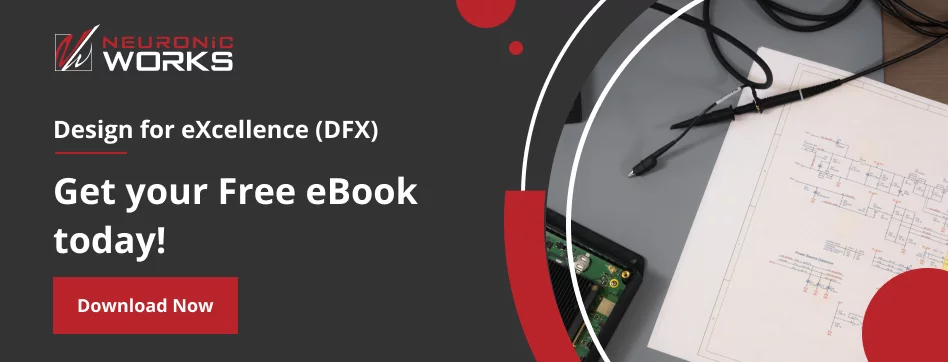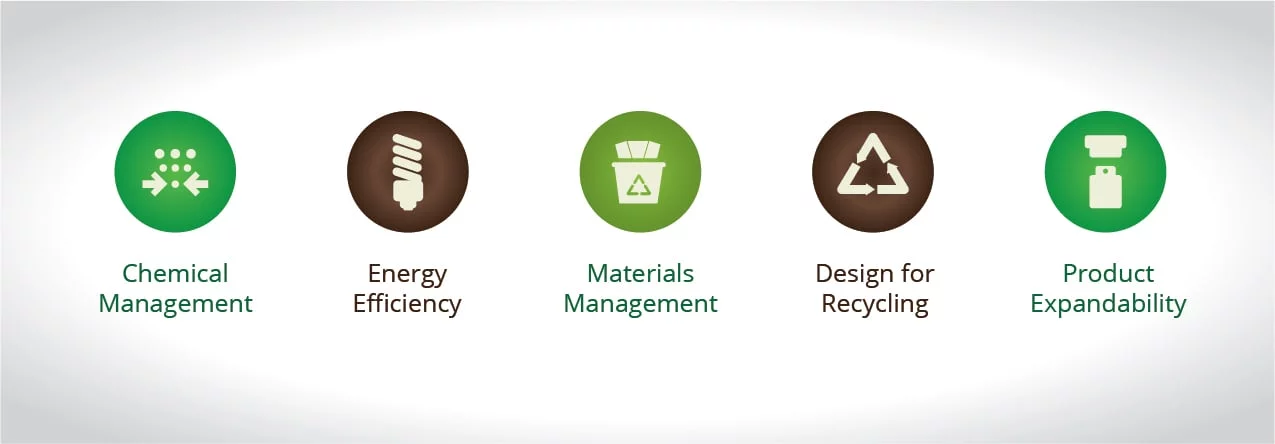Chemical Management
A lot of products use chemicals and metals that could be harmful for the environment and human health, including lead, mercury, cadmium, hexavalent chromium, and selected flame retardants. Now manufacturers are aiming to drastically reduce or completely remove these materials in the production of electronic products.
How can you help with chemical management?
● Try to eliminate or reduce sensitive substances from your products. Lead and lead soldering can be replaced, for instance, by tin/silver/copper alloy when attaching electronic components.
● Reduce or eliminate the use of polyvinyl chloride (PVC), often used in cabling and power supplies. Talk to your cable supplier about switching to elastomer, urethane, or mPPE jacketed cables (some of which can have superior weather, mechanical, and chemical resistance as an added benefit).
● Eliminate or replace the use of flame retardants. Even though the use of flame retardants is a mandatory safety requirement for electronics, nowadays there are better alternatives. Consider replacing the plastic exteriors with lightweight metals so there is no need to use flame retardants. You can also use inherently flame-resistant plastic, such as polyphenylene sulphide (PPS), for the casings of electronics.
Energy Efficiency
Reducing energy consumption is important to reduce the emission of greenhouse gasses and of course, save significant costs in electricity.
How can you design energy-efficient products?
● Include power management features, such as low-power standby mode, auto power savings, and user-activated power options via the ENERGY STAR features.
● Enable energy harvesting. Harvesting energy from local sources and storing in near-point-of-load power banks reduces the burden on local grids and allows the energy to be used ‘offline’. Solar is becoming increasingly viable for self-powered devices; for wearables, energy can be harvested from body motions. Using supercapacitors in lieu of batteries eliminates the need for lithium or other toxic battery materials and simplifies recycling.
● Use low-power technologies to design new appliances and gadgets that will reduce the amount of energy used in aggregate, such as InnoPhase’s extreme low-power platforms, Ambiq Micro’s ultra-low power solutions, EM Microelecronic’s ultra-low power, low voltage integrated circuits (IC), and PowerCast’s long-range, power-over-distance wireless charging technologies.
Materials Management
Although the miniaturization of components and devices has helped to reduce the use of resources needed to produce electronics, there are still opportunities to improve the use and management of resources.
How can you improve materials management?
● Design, when possible, smaller products that will need less materials and resources in manufacturing and which will also generate less waste at the end of their lifecycle.
● Replace difficult-to-recycle plastics with lighter and more durable materials, such as aluminium and magnesium, that make the products more valuable to recycle.
● Consider the use of vegetable-based and recycled plastics, recycled glasses, and propylene in your products, packaging, and shipping materials.
● Optimize the amount of parts needed in your design, so you maximize the use of materials.
● Design the product for reusable and long-life batteries instead of single use batteries.
● Optimize your product packaging to use as few materials as possible. This saves on packing supplies and allows for greater shipping density, lowering the carbon footprint per product.
● Consider the use of cloud computing. Cloud services are up to 93 percent more energy efficient and up to 98 percent more carbon efficient than traditional enterprise datacenters.
Design for Recycling and End-of-Life
Electronics contain an important variety of materials that can be recovered through responsible recycling. These reclaimed materials can be used in the manufacturing of new products, with a significantly smaller footprint than traditional mining and extraction.
Canada is becoming a global leader in the recycling of electronics. Consumers are more committed to buying electronics that can be recycled at the end of their life cycle and this is driving processes and design principles that make electronics easier to dismantle, sort, and recycle.
How can you design for recycling and end-of-life?
● Consider using fewer screws and screw types to reduce the time required for disassembly. Including more snap-fit parts is a good alternative as well.
● Use international standards for marking parts, such as ISO 28219:2017, so it is easier to identify plastics for recycling.
● Avoid painting and varnishing plastics as this will help with the material’s value for recycling.
● If possible, minimize welding and gluing of different parts to avoid contamination.
● Increase the use of highly recyclable materials such as aluminium.
Product Expandability and Longevity
Consumers want to purchase products that are multi-functional units and that will have a longer lifecycle.
How can you design for product expandability?
● Consider adopting a part-update approach. Instead of constantly releasing new versions of the product, offer the option to only change the part that was updated (e.g. the camera on a smartphone). You will reduce greenhouse emissions, materials, and resources needed to develop a whole new product.
● Design products with features that will keep the device useful and relevant longer, extending the life of the device and avoiding it entering the waste stream early.
● Consider repair procedures as part of your mechanical design process so that one small failure does not lead to the disposal of the whole product. This kind of check may also lead to the discovery of additional assembly process efficiencies.
● Repairable products can be diverted from landfill. Canadians overwhelmingly want products that are repairable and offering a product that can be serviced long-term can offer a competitive edge.
Sustainability: A Team Effort
The importance of environmentally responsible electronics design will only grow as a ‘green consciousness’ develops among consumers and governments. As manufacturers and designers of electronic products we all have a role to play in this initiative within our industry.
While there are numerous considerations that need to be taken into account for designing sustainable products, it is important to think about them from the start: the design of the product, materials, number of parts, size of device, responsible suppliers, among others.
At NeuronicWorks we’re proud of our work designing environmentally friendly products. We’re continually learning and improving our design procedures and checklist to include more environmentally conscious checks and practices.
Sources used for this article:
https://epsc.ca/wp-content/uploads/Designing-for-Env.-EPSC-oct.-06-1.pdf
https://epsc.ca/wp-content/uploads/EPSC_Report_2018_Web-1.pdf
https://epsc.ca/wp-content/uploads/EPSC_Report_2019_Web_Final.pdf

If you’re looking for help designing environmentally friendly products, NeuronicWorks has over a decade of experience designing sustainable products across multiple industries, including wearables, automotive, medical, and transportation, to name just a few. Contact us today to find out how NeuronicWorks can help you design your environmentally friendly products.
